Are you curious about the culinary world and stumbled upon the term “Al Pastor” but are unsure what it means in Spanish? At WHAT.EDU.VN, we understand the joy of exploring new flavors and the desire for clear, accessible information. We’re here to demystify this delicious dish for you. Dive in to learn everything about “Al Pastor,” its Spanish translation, and why it’s a must-try. Uncover its rich history, preparation methods, and cultural significance, and expand your culinary vocabulary.
1. Defining “Pastor” and “Al Pastor” in Spanish
Let’s begin by breaking down the terms. The word “pastor” in Spanish translates directly to “shepherd” in English. However, when you see “al pastor” in a culinary context, it refers to a specific style of marinated and cooked pork that is incredibly popular in Mexican cuisine.
1.1. “Pastor”: The Literal Translation
In its simplest form, “pastor” means shepherd. Here’s how it’s used in everyday Spanish:
- Definition: A person who herds and cares for sheep.
- Usage: “El pastor lleva a las ovejas al campo.” (The shepherd takes the sheep to the field.)
1.2. “Al Pastor”: The Culinary Delight
“Al pastor” is where things get interesting. This term describes a particular way of preparing pork, influenced by Lebanese immigrants who brought shawarma cooking techniques to Mexico.
- Definition: Pork that is marinated in a blend of spices, chilies, and pineapple, then slow-cooked on a vertical spit.
- Significance: The name “al pastor” (shepherd style) refers to the cooking method, reminiscent of how lamb shawarma is prepared.
2. The History and Origin of Al Pastor
To truly understand what “al pastor” is, it’s essential to delve into its history. This iconic dish is a fusion of culinary traditions, blending Middle Eastern techniques with Mexican flavors.
2.1. Lebanese Influence
In the late 19th and early 20th centuries, Lebanese immigrants arrived in Mexico, bringing with them their culinary traditions, including the method of cooking meat on a vertical spit. This technique, used for making shawarma, was adapted by the Mexicans, who substituted lamb with pork and incorporated local spices and ingredients.
2.2. The Birth of Al Pastor
The result was “al pastor,” a unique dish that retained the vertical spit-roasting method but embraced Mexican flavors. The pork is marinated in a blend of achiote, chilies, spices, and pineapple, giving it a distinctive sweet and savory taste.
2.3. Cultural Significance
Al pastor quickly became a staple in Mexican cuisine, particularly in Mexico City and surrounding areas. It’s a common street food, often served in tacos with onions, cilantro, and a slice of pineapple. Its popularity has spread throughout Mexico and beyond, making it a beloved dish worldwide.
3. How Al Pastor is Made: A Step-by-Step Guide
The preparation of al pastor involves several key steps, from marinating the pork to slow-cooking it on a vertical spit. Here’s a detailed look at the process.
3.1. Selecting the Pork
The traditional cut of pork used for al pastor is pork shoulder (also known as Boston butt). This cut is preferred because it has a good balance of fat and meat, which keeps it moist and flavorful during the slow-cooking process.
3.2. Marinating the Pork
The marinade is what gives al pastor its distinctive flavor. Key ingredients include:
- Achiote paste: This gives the pork its vibrant red color and earthy flavor.
- Chilies: A blend of dried chilies, such as guajillo and ancho, adds depth and heat.
- Spices: Cumin, oregano, garlic, and cloves are commonly used to enhance the flavor.
- Pineapple: This adds sweetness and acidity, which helps to tenderize the meat.
- Vinegar: Adds tanginess and helps to break down the meat fibers.
The pork is typically marinated for at least several hours, or ideally overnight, to allow the flavors to fully penetrate the meat.
3.3. Assembling the Trompo
The marinated pork is then stacked onto a vertical spit, known as a “trompo” (spinning top). Thin slices of pork are layered on top of each other, forming a large cone-shaped mass. A pineapple is often placed at the top of the trompo, both for flavor and to help baste the meat as it cooks.
3.4. Slow-Cooking the Pork
The trompo is then slow-cooked over an open flame, typically using gas or charcoal. As the pork cooks, the outer layers become crispy and caramelized, while the inner layers remain tender and juicy.
3.5. Slicing and Serving
The cooked pork is thinly sliced off the trompo using a large knife. These slices are typically served in small corn tortillas, topped with diced onions, cilantro, and a slice of pineapple. Salsas and lime wedges are often served on the side.
4. Key Ingredients in Al Pastor
The unique flavor of al pastor comes from a combination of ingredients that create a balance of sweet, savory, and spicy notes.
4.1. Achiote Paste
Achiote paste is made from annatto seeds, which have a mild, earthy flavor and give the pork its distinctive red color. It’s a staple in many Mexican and Latin American dishes.
4.2. Chilies
A blend of dried chilies, such as guajillo, ancho, and pasilla, are typically used to add depth and heat to the marinade. The chilies are rehydrated and blended into a paste before being added to the marinade.
4.3. Spices
Cumin, oregano, garlic, and cloves are commonly used to enhance the flavor of al pastor. These spices add warmth and complexity to the dish.
4.4. Pineapple
Pineapple is a key ingredient in al pastor, adding sweetness and acidity to the marinade. It also helps to tenderize the pork, resulting in a more succulent and flavorful dish.
4.5. Vinegar
Vinegar adds tanginess to the marinade, helping to balance the sweetness of the pineapple and the heat of the chilies. It also helps to break down the meat fibers, making the pork more tender.
5. Variations of Al Pastor
While the traditional preparation of al pastor remains popular, there are several variations that offer a unique twist on this classic dish.
5.1. Al Pastor Tacos
The most common way to enjoy al pastor is in tacos. The thinly sliced pork is served in small corn tortillas, topped with diced onions, cilantro, and a slice of pineapple.
5.2. Al Pastor Burritos
Al pastor can also be used as a filling for burritos. It’s typically combined with rice, beans, cheese, and other toppings to create a hearty and flavorful meal.
5.3. Al Pastor Quesadillas
Another popular variation is al pastor quesadillas. The pork is combined with cheese and grilled in a tortilla until the cheese is melted and the tortilla is crispy.
5.4. Al Pastor Tortas
Tortas are Mexican sandwiches, and al pastor makes an excellent filling. The pork is layered with beans, avocado, cheese, and other toppings in a crusty roll.
5.5. Al Pastor Bowls
For a lighter option, al pastor can be served in a bowl with rice, beans, and your choice of toppings. This is a great way to enjoy the flavors of al pastor without the added carbs of a tortilla.
6. Where to Find Authentic Al Pastor
If you’re craving authentic al pastor, there are several places you can look.
6.1. Mexican Restaurants
Many Mexican restaurants, particularly those specializing in street food, serve al pastor. Look for restaurants that have a vertical spit, as this is a sign that they prepare the pork in the traditional manner.
6.2. Street Vendors
In Mexico, al pastor is commonly sold by street vendors. These vendors often have a trompo set up on the sidewalk, where they cook and slice the pork fresh to order.
6.3. Latin American Markets
Latin American markets often sell marinated al pastor that you can cook at home. This is a convenient option if you want to try making your own al pastor but don’t want to go through the process of making the marinade from scratch.
7. Health Benefits and Nutritional Information
While al pastor is a delicious and satisfying dish, it’s important to be aware of its nutritional content.
7.1. Protein
Al pastor is a good source of protein, which is essential for building and repairing tissues in the body.
7.2. Vitamins and Minerals
Pork is a good source of several vitamins and minerals, including vitamin B12, iron, and zinc.
7.3. Fat and Calories
Al pastor can be high in fat and calories, particularly if it’s made with a lot of fatty pork. It’s important to consume it in moderation as part of a balanced diet.
7.4. Sodium
The marinade used for al pastor can be high in sodium, so it’s important to be mindful of your sodium intake if you’re watching your blood pressure.
8. How to Make Al Pastor at Home
If you’re feeling adventurous, you can try making al pastor at home. While it requires some time and effort, the results are well worth it.
8.1. Gathering the Ingredients
You’ll need the following ingredients:
- 4 pounds pork shoulder, cut into thin slices
- 1 cup achiote paste
- 1/2 cup orange juice
- 1/4 cup pineapple juice
- 1/4 cup white vinegar
- 3 cloves garlic, minced
- 1 teaspoon cumin
- 1 teaspoon oregano
- 1/2 teaspoon ground cloves
- Salt and pepper to taste
- 1 pineapple, peeled and cored
- Corn tortillas
- Diced onions
- Cilantro
- Lime wedges
8.2. Marinating the Pork
In a large bowl, combine the achiote paste, orange juice, pineapple juice, white vinegar, garlic, cumin, oregano, cloves, salt, and pepper. Add the pork slices and toss to coat. Cover and refrigerate for at least 4 hours, or ideally overnight.
8.3. Assembling the Trompo
If you have a vertical spit, thread the marinated pork slices onto the spit, layering them on top of each other. Place the pineapple at the top of the trompo. If you don’t have a vertical spit, you can stack the pork slices in a loaf pan.
8.4. Cooking the Pork
If using a vertical spit, cook the pork over medium heat, rotating the trompo occasionally, until the pork is cooked through and the outer layers are crispy, about 1-2 hours. If using a loaf pan, bake the pork in a preheated oven at 350°F (175°C) for 1-2 hours, or until cooked through.
8.5. Slicing and Serving
Thinly slice the cooked pork and serve in corn tortillas, topped with diced onions, cilantro, and a slice of pineapple. Serve with lime wedges on the side.
9. Pairing Al Pastor with Other Dishes
Al pastor pairs well with a variety of other Mexican dishes.
9.1. Rice and Beans
Rice and beans are a classic accompaniment to al pastor. They provide a hearty and satisfying base for the dish.
9.2. Guacamole
Guacamole adds creaminess and richness to al pastor tacos or burritos.
9.3. Salsa
Salsa is a must-have for al pastor. Choose your favorite type, whether it’s a mild pico de gallo or a spicy salsa verde.
9.4. Mexican Street Corn
Mexican street corn (elote) is a delicious and flavorful side dish that complements al pastor perfectly.
9.5. Horchata
Horchata, a sweet rice milk beverage, is a refreshing drink to pair with al pastor.
10. Al Pastor Around the World
While al pastor is most closely associated with Mexico, it has gained popularity in other parts of the world as well.
10.1. United States
Al pastor is a popular dish in the United States, particularly in cities with large Mexican populations. You can find it in many Mexican restaurants and food trucks.
10.2. Canada
Al pastor is also gaining popularity in Canada, with Mexican restaurants in major cities offering it on their menus.
10.3. Europe
In Europe, al pastor can be found in some Mexican restaurants, particularly in cities with a diverse culinary scene.
10.4. Asia
While not as common as in the Americas, al pastor is starting to make its way into the culinary landscape of Asia, with some restaurants offering it as a fusion dish.
11. Common Mistakes to Avoid When Making Al Pastor
Making al pastor at home can be a rewarding experience, but it’s important to avoid common mistakes to ensure the best results.
11.1. Not Marinating the Pork Long Enough
The marinade is essential for giving al pastor its distinctive flavor, so it’s important to marinate the pork for at least 4 hours, or ideally overnight.
11.2. Using the Wrong Cut of Pork
Pork shoulder (Boston butt) is the traditional cut of pork used for al pastor because it has a good balance of fat and meat. Using a leaner cut of pork can result in a dry and less flavorful dish.
11.3. Overcooking the Pork
Overcooking the pork can make it tough and dry. It’s important to cook it until it’s just cooked through and still moist.
11.4. Not Slicing the Pork Thinly Enough
Al pastor is traditionally sliced very thinly, which helps to create a crispy and flavorful texture.
11.5. Skipping the Pineapple
Pineapple is a key ingredient in al pastor, adding sweetness, acidity, and tenderness to the pork. Don’t skip it!
12. Fun Facts About Al Pastor
Here are some fun facts about al pastor that you might not know.
12.1. Lebanese Influence
Al pastor is a fusion of Lebanese and Mexican culinary traditions, blending Middle Eastern techniques with Mexican flavors.
12.2. Vertical Spit
The vertical spit used to cook al pastor is called a “trompo,” which means “spinning top” in Spanish.
12.3. Pineapple Topping
A pineapple is often placed at the top of the trompo, both for flavor and to help baste the meat as it cooks.
12.4. Street Food
Al pastor is a common street food in Mexico, often served in tacos with onions, cilantro, and a slice of pineapple.
12.5. Cultural Icon
Al pastor is considered a cultural icon in Mexico, particularly in Mexico City and surrounding areas.
13. The Future of Al Pastor
As culinary trends evolve, al pastor is likely to continue to adapt and innovate.
13.1. Fusion Cuisine
Al pastor may be incorporated into fusion dishes, blending Mexican flavors with other culinary traditions.
13.2. Vegetarian Options
Vegetarian versions of al pastor may become more popular, using ingredients like mushrooms or jackfruit to mimic the texture and flavor of pork.
13.3. Gourmet Variations
Gourmet variations of al pastor may emerge, using high-quality ingredients and innovative cooking techniques.
13.4. Global Expansion
Al pastor is likely to continue to spread to other parts of the world, as more people discover its delicious and unique flavor.
14. The Art of Ordering Al Pastor in Spanish
Knowing how to order al pastor in Spanish can enhance your dining experience.
14.1. Basic Phrases
Here are some basic phrases to use when ordering al pastor:
- “Quiero un taco al pastor, por favor.” (I want an al pastor taco, please.)
- “¿Tiene tacos al pastor?” (Do you have al pastor tacos?)
- “¿Cuánto cuesta un taco al pastor?” (How much does an al pastor taco cost?)
14.2. Customizing Your Order
You can also customize your order by asking for specific toppings or sides:
- “Con cebolla y cilantro, por favor.” (With onions and cilantro, please.)
- “¿Tiene salsa picante?” (Do you have spicy sauce?)
- “Quiero una horchata para acompañar.” (I want a horchata to go with it.)
14.3. Describing Your Preferences
If you have specific preferences, you can communicate them to the server:
- “Quiero la carne bien dorada.” (I want the meat well-browned.)
- “Sin piña, por favor.” (Without pineapple, please.)
- “No quiero la salsa muy picante.” (I don’t want the sauce too spicy.)
15. Exploring Mexican Culinary Culture
Understanding al pastor provides a gateway to exploring the broader Mexican culinary culture.
15.1. Regional Variations
Mexican cuisine varies widely by region, with each area having its own unique dishes and flavors.
15.2. Street Food
Street food is an integral part of Mexican culinary culture, with vendors offering a wide variety of delicious and affordable dishes.
15.3. Family Traditions
Food plays a central role in Mexican family traditions, with many dishes being passed down through generations.
15.4. Celebrations
Food is an important part of Mexican celebrations, with special dishes being prepared for holidays and festivals.
16. The Perfect Al Pastor Taco: A Recipe for Success
Creating the perfect al pastor taco involves balancing flavors and textures.
16.1. High-Quality Ingredients
Start with high-quality ingredients, including fresh pork, authentic achiote paste, and ripe pineapple.
16.2. Balanced Marinade
The marinade should have a balance of sweet, savory, and spicy notes. Adjust the ingredients to suit your taste preferences.
16.3. Proper Cooking Technique
Cook the pork slowly and evenly, allowing the flavors to meld and the meat to become tender.
16.4. Fresh Toppings
Use fresh toppings, such as diced onions, cilantro, and a slice of pineapple, to add brightness and flavor.
16.5. Warm Tortillas
Warm the tortillas before serving to make them more pliable and flavorful.
17. Al Pastor vs. Other Mexican Meats
Al pastor is just one of many delicious meats used in Mexican cuisine.
17.1. Carne Asada
Carne asada is grilled beef, typically marinated in a blend of citrus juices, garlic, and spices.
17.2. Carnitas
Carnitas are slow-cooked pork that is shredded and served in tacos or other dishes.
17.3. Barbacoa
Barbacoa is slow-cooked meat, typically beef, lamb, or goat, that is cooked in an underground pit.
17.4. Chorizo
Chorizo is a spicy sausage that is often used as a filling for tacos, burritos, and other dishes.
17.5. Pollo Asado
Pollo asado is grilled chicken that is marinated in a blend of spices and citrus juices.
18. Understanding the Trompo: The Heart of Al Pastor
The trompo is the vertical spit used to cook al pastor and is an essential part of the cooking process.
18.1. Design and Function
The trompo is designed to allow the pork to cook slowly and evenly, with the outer layers becoming crispy and caramelized.
18.2. Types of Trompos
Trompos can be powered by gas, charcoal, or electricity.
18.3. Maintenance
Proper maintenance of the trompo is essential for ensuring that it functions properly and safely.
18.4. Safety Precautions
When using a trompo, it’s important to follow safety precautions to prevent accidents.
19. Exploring the Flavors of Al Pastor: A Tasting Guide
Tasting al pastor is an experience that engages all of the senses.
19.1. Aroma
The aroma of al pastor is a blend of smoky, spicy, and sweet notes.
19.2. Appearance
The appearance of al pastor is characterized by its vibrant red color and crispy, caramelized edges.
19.3. Texture
The texture of al pastor is a combination of tender, juicy meat and crispy, slightly charred edges.
19.4. Taste
The taste of al pastor is a complex blend of sweet, savory, and spicy flavors.
19.5. Overall Experience
The overall experience of tasting al pastor is one of culinary delight and cultural immersion.
20. Al Pastor for Special Occasions
Al pastor is a great choice for special occasions.
20.1. Parties
Al pastor is a crowd-pleasing dish that is perfect for parties.
20.2. Family Gatherings
Al pastor is a great choice for family gatherings, as it is a dish that everyone can enjoy.
20.3. Celebrations
Al pastor is a festive dish that is perfect for celebrations.
20.4. Tailgating
Al pastor tacos are a great option for tailgating events.
20.5. Outdoor Events
Al pastor is a delicious and convenient option for outdoor events.
21. Tips for Storing and Reheating Al Pastor
Proper storage and reheating techniques can help preserve the flavor and texture of al pastor.
21.1. Storing Leftovers
Store leftover al pastor in an airtight container in the refrigerator for up to 3-4 days.
21.2. Reheating Techniques
Reheat al pastor in a skillet over medium heat, or in the microwave.
21.3. Preventing Dryness
To prevent the pork from drying out, add a little water or broth when reheating.
21.4. Freezing Al Pastor
Al pastor can be frozen for longer storage. Wrap it tightly in plastic wrap and place it in a freezer bag.
21.5. Thawing Al Pastor
Thaw frozen al pastor in the refrigerator overnight before reheating.
22. Al Pastor: A Culinary Adventure
Exploring al pastor is a culinary adventure that offers a glimpse into the rich and diverse world of Mexican cuisine.
22.1. Experimenting with Flavors
Don’t be afraid to experiment with different flavors and ingredients to create your own unique version of al pastor.
22.2. Trying New Dishes
Use al pastor as a starting point for trying other Mexican dishes and exploring the culinary traditions of different regions.
22.3. Sharing with Others
Share your love of al pastor with others by cooking it for friends and family and introducing them to this delicious and unique dish.
23. Frequently Asked Questions About Al Pastor
Here are some frequently asked questions about al pastor.
| Question | Answer |
|---|---|
| What does “al pastor” mean in Spanish? | “Al pastor” translates to “shepherd style” in English. It refers to the way the pork is cooked on a vertical spit, similar to how shepherds traditionally cooked lamb. |
| What kind of meat is used for al pastor? | Al pastor is typically made with pork shoulder (also known as Boston butt). This cut is preferred because it has a good balance of fat and meat, which keeps it moist and flavorful during the slow-cooking process. |
| What are the key ingredients in al pastor? | The key ingredients in al pastor include achiote paste, chilies, spices, pineapple, and vinegar. These ingredients create a balance of sweet, savory, and spicy notes that give al pastor its distinctive flavor. |
| How is al pastor traditionally cooked? | Al pastor is traditionally cooked on a vertical spit, known as a “trompo.” The pork is marinated in a blend of spices and chilies, then stacked onto the spit and slow-cooked over an open flame. As the pork cooks, the outer layers become crispy and caramelized, while the inner layers remain tender and juicy. |
| What is the best way to serve al pastor? | The most common way to serve al pastor is in tacos. The thinly sliced pork is served in small corn tortillas, topped with diced onions, cilantro, and a slice of pineapple. Salsas and lime wedges are often served on the side. |
| Is al pastor healthy? | Al pastor can be high in fat and calories, particularly if it’s made with a lot of fatty pork. It’s important to consume it in moderation as part of a balanced diet. However, it is also a good source of protein and several vitamins and minerals. |
| Can I make al pastor at home? | Yes, you can make al pastor at home, although it requires some time and effort. You’ll need to marinate the pork, assemble the trompo (or use a loaf pan), and cook it slowly until it’s cooked through and the outer layers are crispy. |
| What are some variations of al pastor? | Some variations of al pastor include al pastor burritos, al pastor quesadillas, al pastor tortas, and al pastor bowls. These variations offer a unique twist on the classic dish. |
| Where can I find authentic al pastor? | You can find authentic al pastor in many Mexican restaurants, particularly those specializing in street food. Look for restaurants that have a vertical spit, as this is a sign that they prepare the pork in the traditional manner. You can also find it from street vendors in Mexico and in Latin American markets. |
| What is the cultural significance of al pastor? | Al pastor is considered a cultural icon in Mexico, particularly in Mexico City and surrounding areas. It is a fusion of Lebanese and Mexican culinary traditions and is a beloved street food that is enjoyed by people of all ages and backgrounds. It is often associated with celebrations, family gatherings, and other special occasions, and is a symbol of Mexican culinary heritage. |
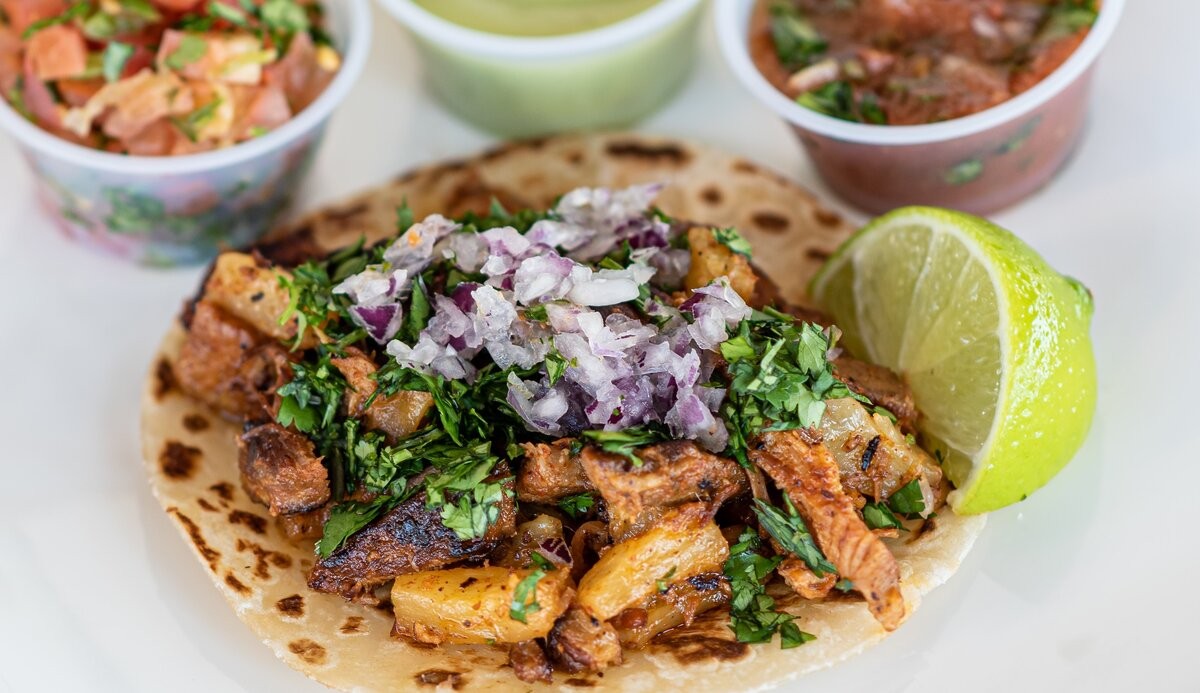
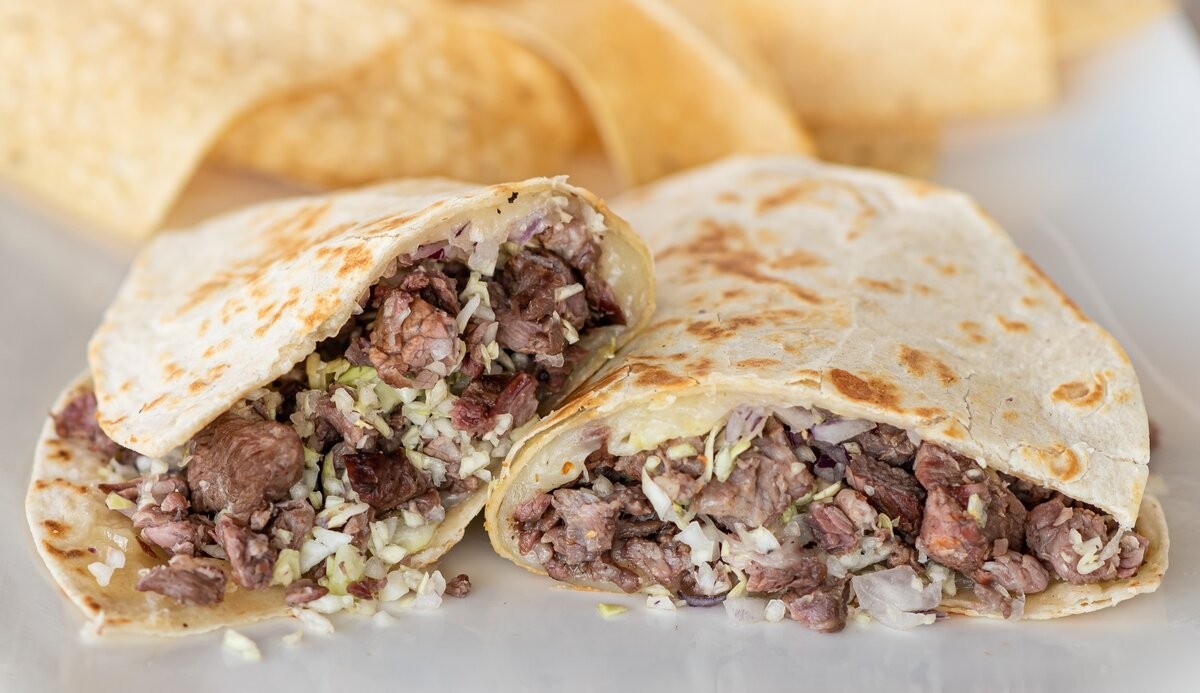
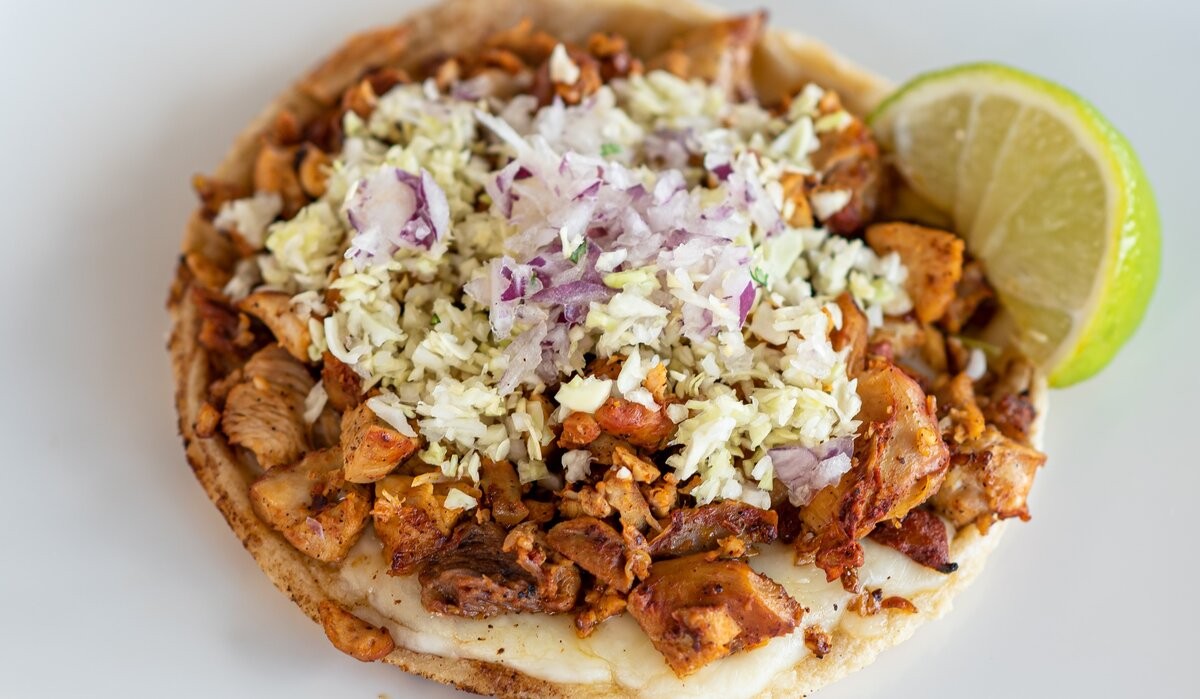
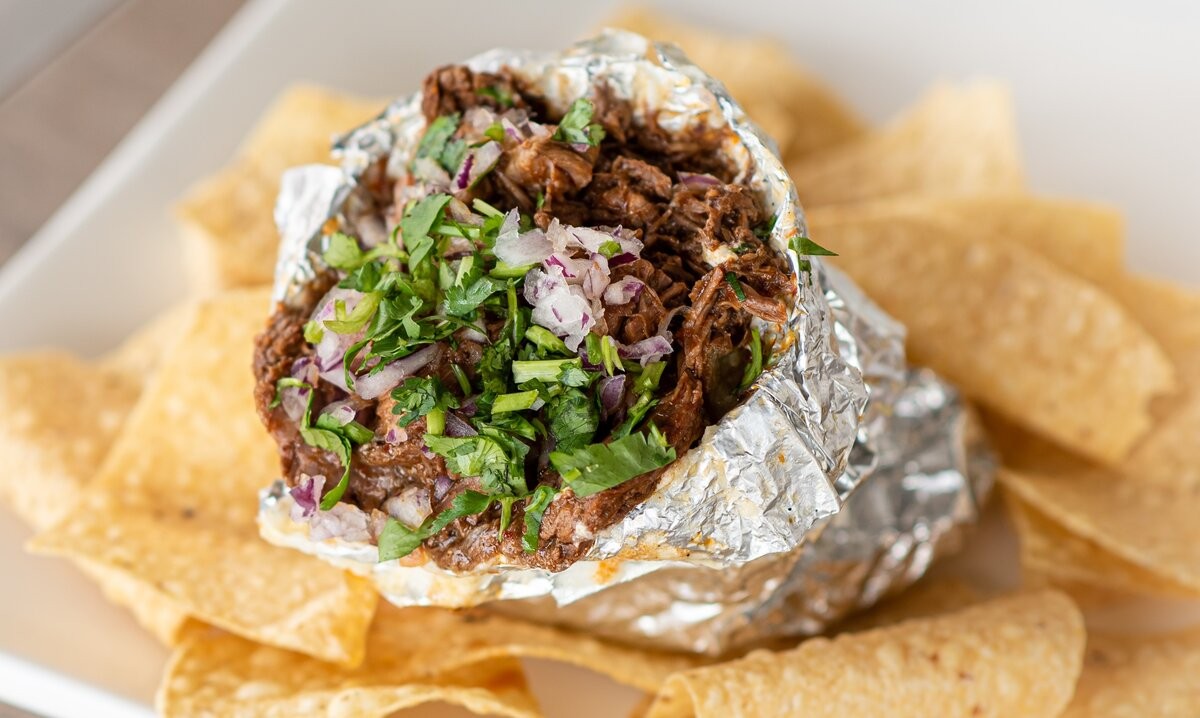
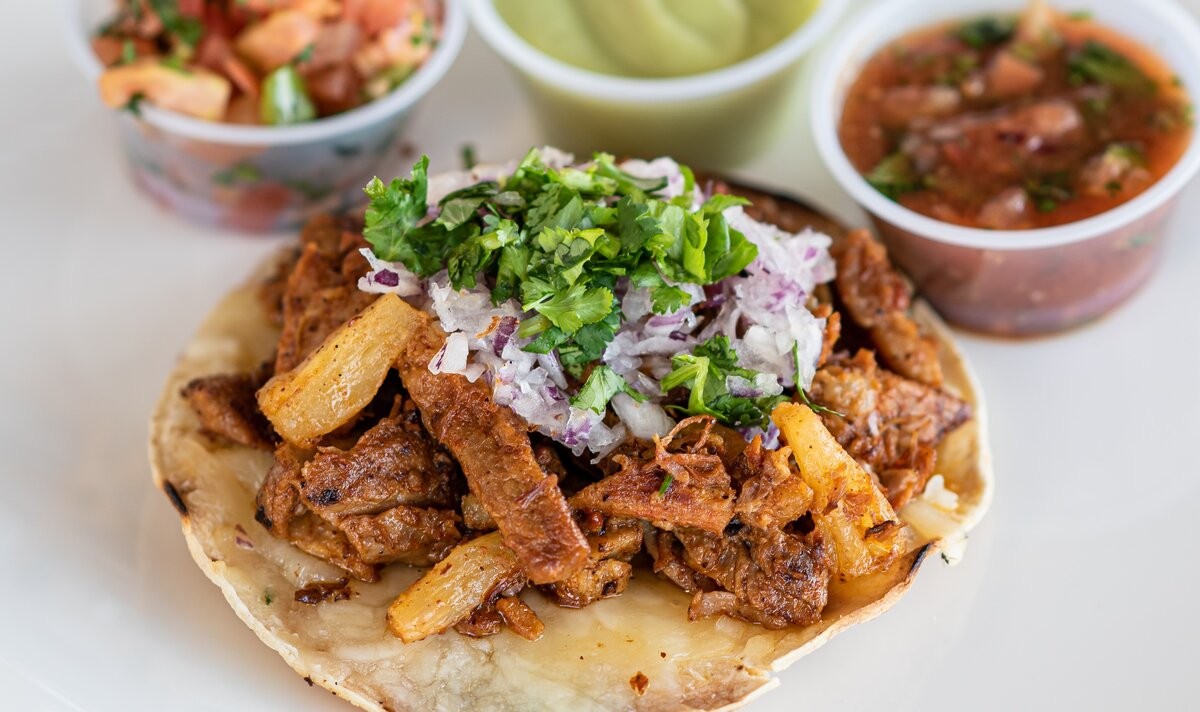
24. Conclusion: The Delicious World of Al Pastor
Al pastor is more than just a dish; it’s a culinary adventure that reflects the rich history and cultural diversity of Mexico. From its humble beginnings as a fusion of Lebanese and Mexican traditions to its current status as a beloved street food, al pastor has captured the hearts (and stomachs) of people around the world. Whether you’re a seasoned foodie or a curious novice, exploring the world of al pastor is sure to be a delicious and rewarding experience.
Have more questions about al pastor or any other culinary topic? Don’t hesitate to ask at WHAT.EDU.VN! Our community of experts is ready to provide you with fast, accurate, and free answers. At WHAT.EDU.VN, we believe that knowledge should be accessible to everyone. Visit us at 888 Question City Plaza, Seattle, WA 98101, United States, or contact us via Whatsapp at +1 (206) 555-7890. Your culinary questions, big or small, are welcome at what.edu.vn. Start your culinary exploration today!